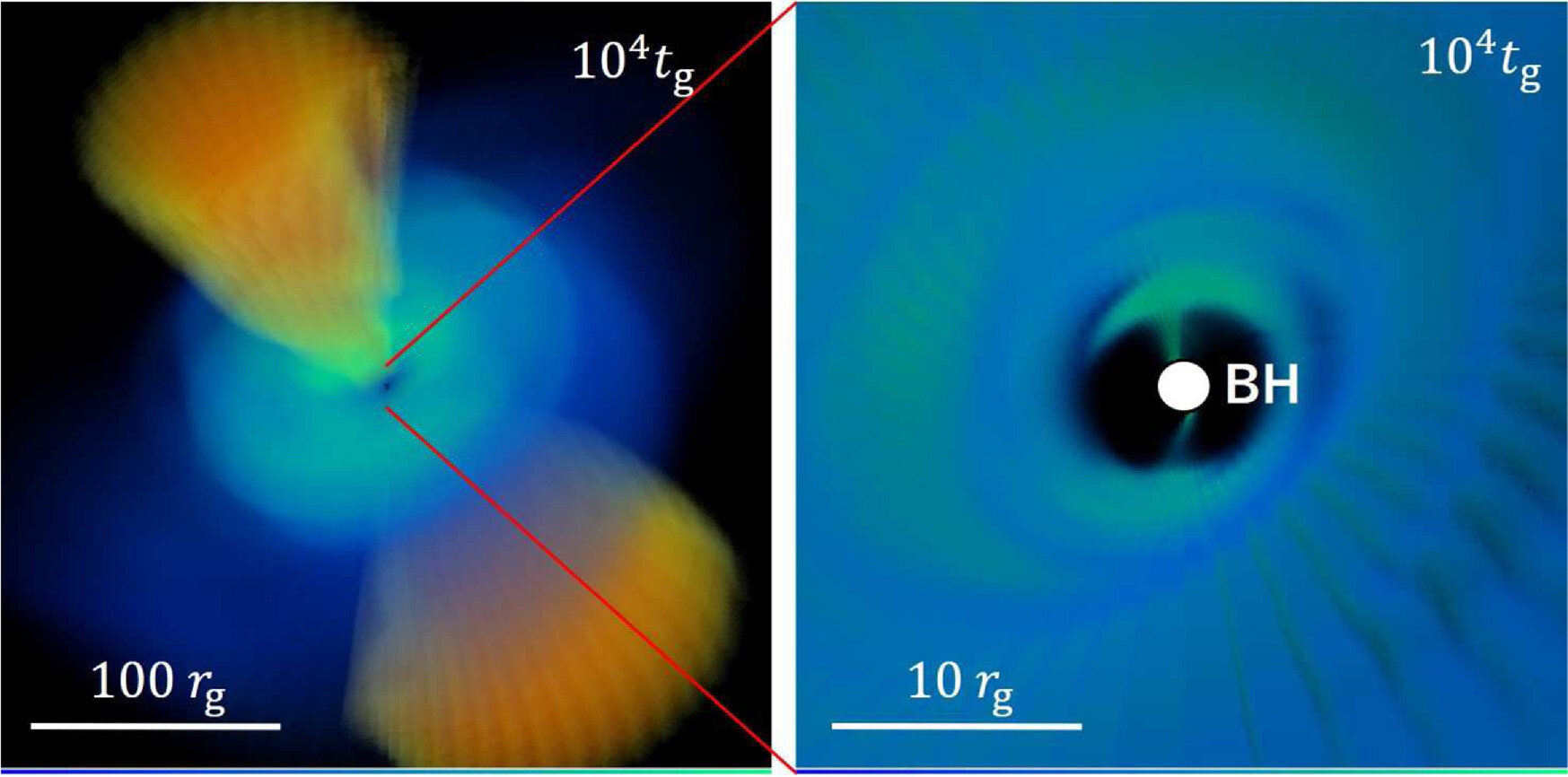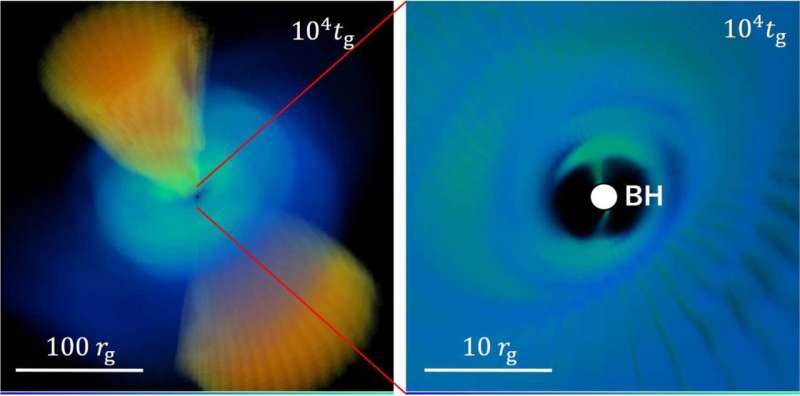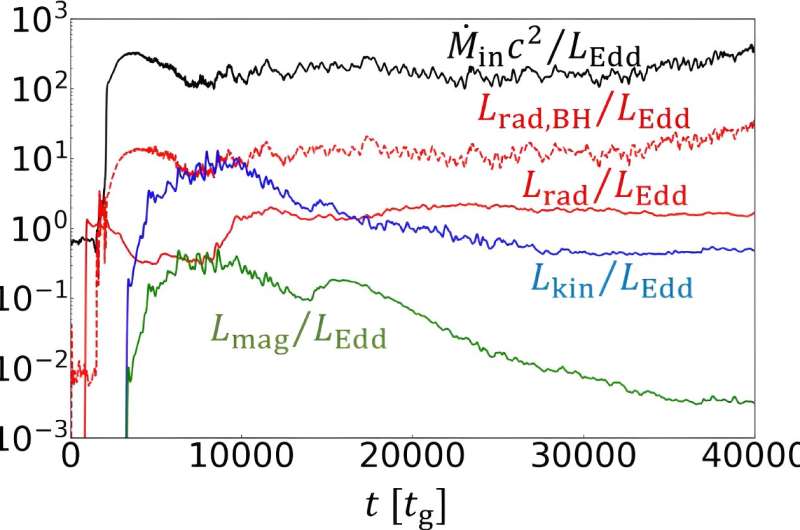

Gas swirls around a black hole due to its intense gravity, forming an accretion disk. These accretion disks, being among the most efficient energy conversion mechanisms in the universe, emit light and plasma jets. When a black hole spins on its axis, the accretion disk wobbles like a spinning top.
This precessional motion has been studied in less luminous accretion disks, but it is unclear if the same phenomenon occurs in ultraluminous accretion disks that emit strong radiation.
Researchers at University of Tsukuba conducted a large-scale radiation electromagnetic hydrodynamics simulation based on general relativity and demonstrated for the first time that the precessional motion of a tilted ultraluminous accretion disk is caused by the spin of the black hole.
In addition, this precessional motion periodically changes the direction of the jets and radiation emitted from the black hole, which indicates that the periodic fluctuations in luminosity of ultraluminous accretion disks may be caused by the spin of the black hole. The cause of such periodic fluctuations has previously been unknown.
The findings are published in The Astrophysical Journal.
In the future, the researchers intend to validate whether black holes are spinning by using comparative analyses between extended-term simulations and observational data. This achievement is poised to deepen our understanding of how the spin of a black hole influences cosmic phenomena, and make a substantial contribution to the authentication of the spacetime framework of black holes and general relativity.

More information:
Yuta Asahina et al, General Relativistic Radiation Magnetohydrodynamics Simulations of Precessing Tilted Super-Eddington Disks, The Astrophysical Journal (2024). DOI: 10.3847/1538-4357/ad6cd9
Provided by
University of Tsukuba
Citation:
Influence of a black hole’s spin: First evidence of precession in ultraluminous accretion disks (2024, October 2)
retrieved 2 October 2024
from https://phys.org/news/2024-10-black-hole-evidence-precession-ultraluminous.html
This document is subject to copyright. Apart from any fair dealing for the purpose of private study or research, no
part may be reproduced without the written permission. The content is provided for information purposes only.